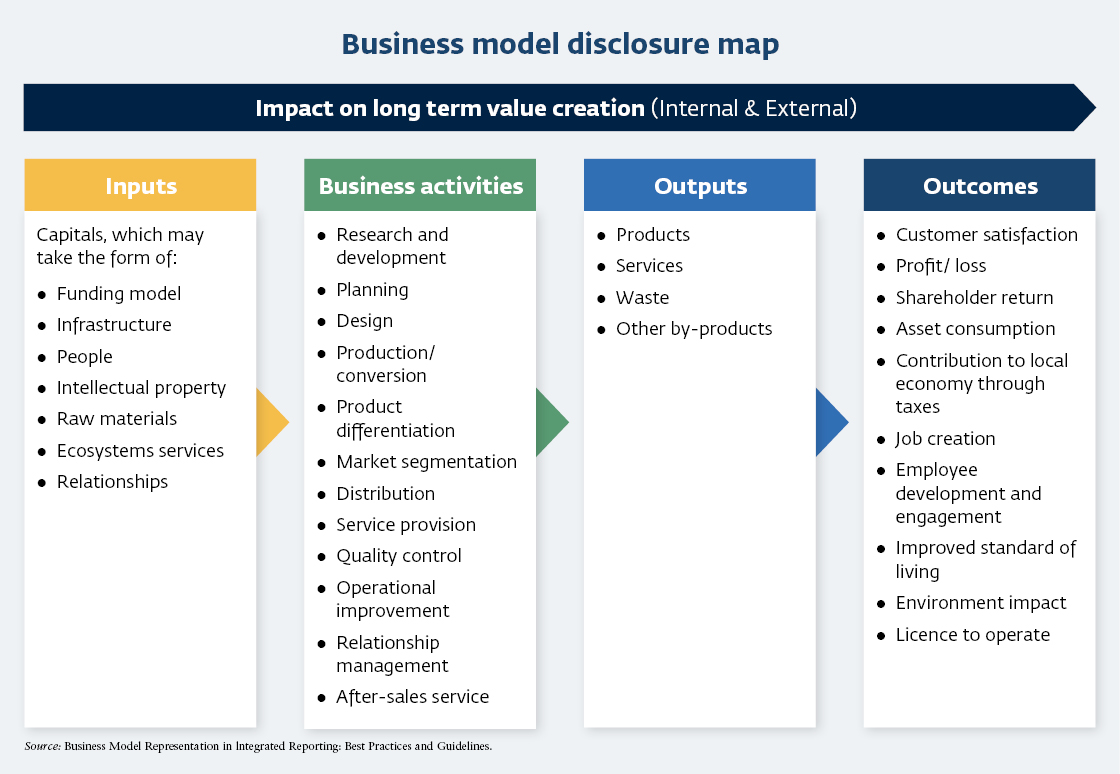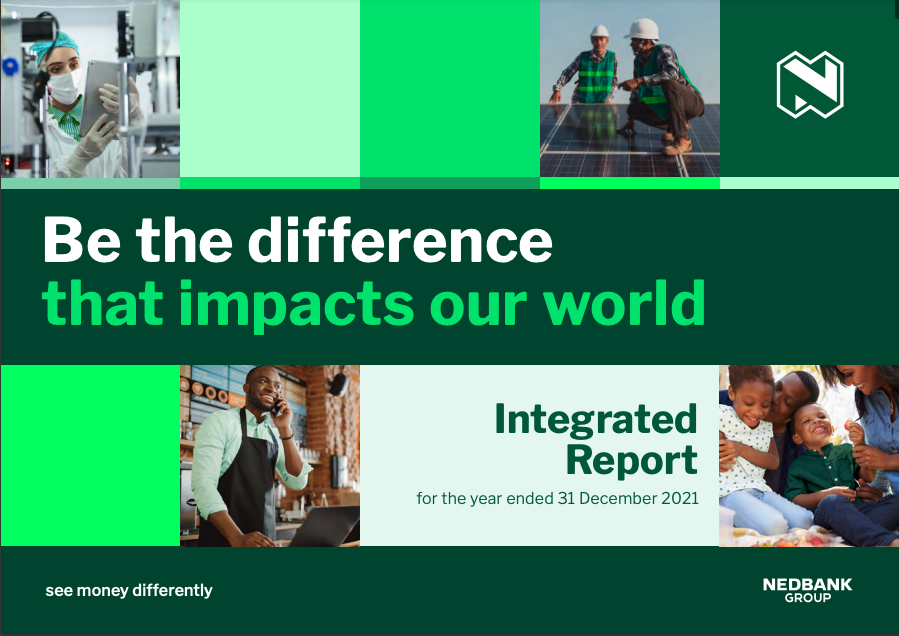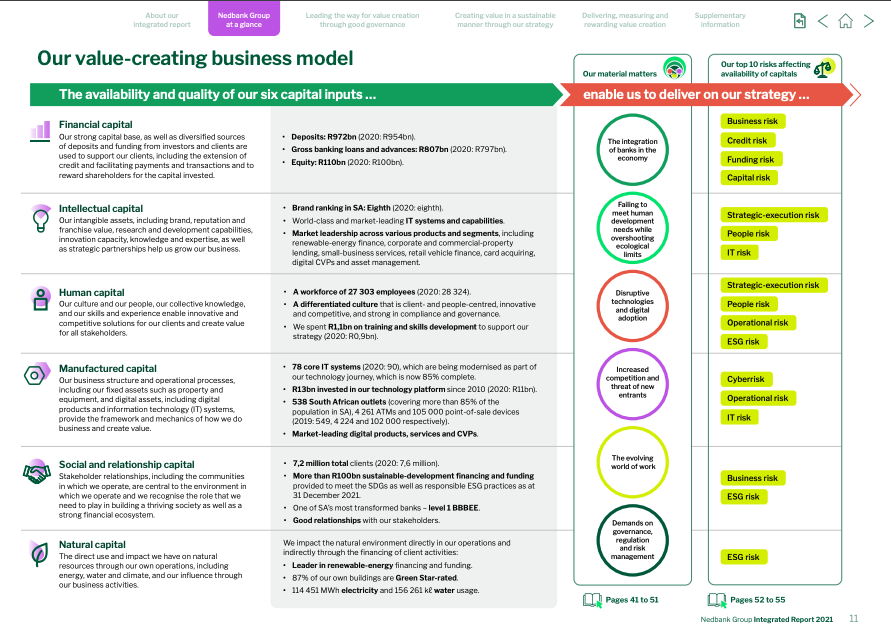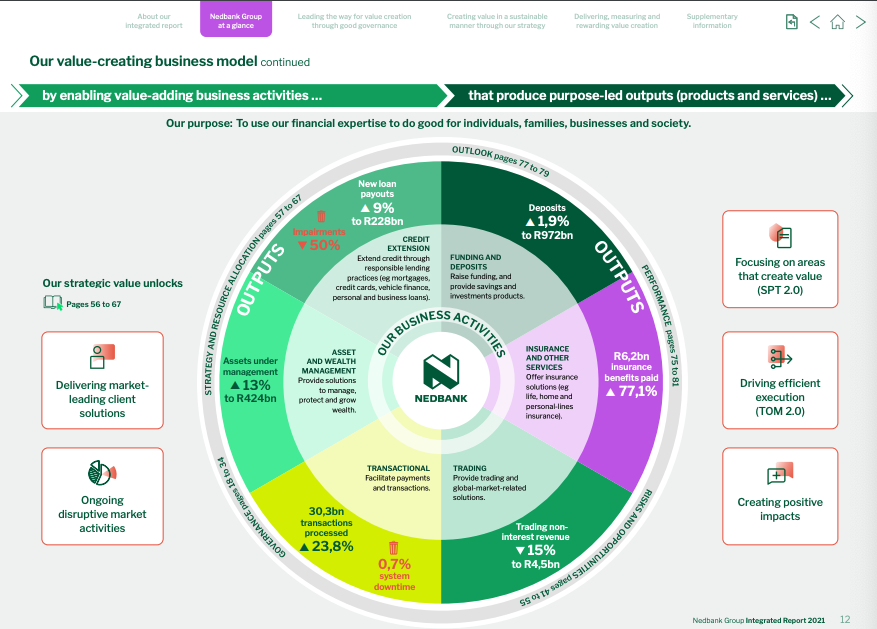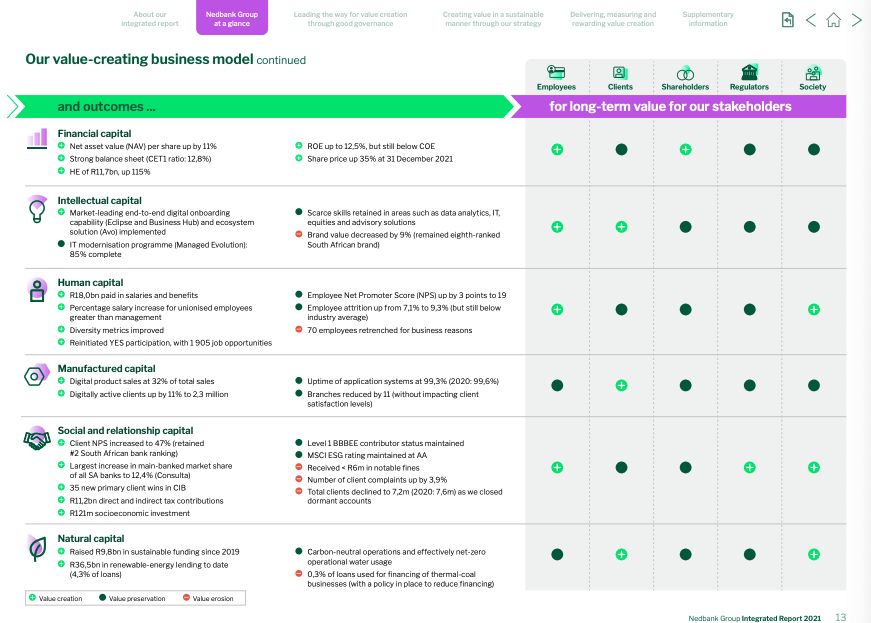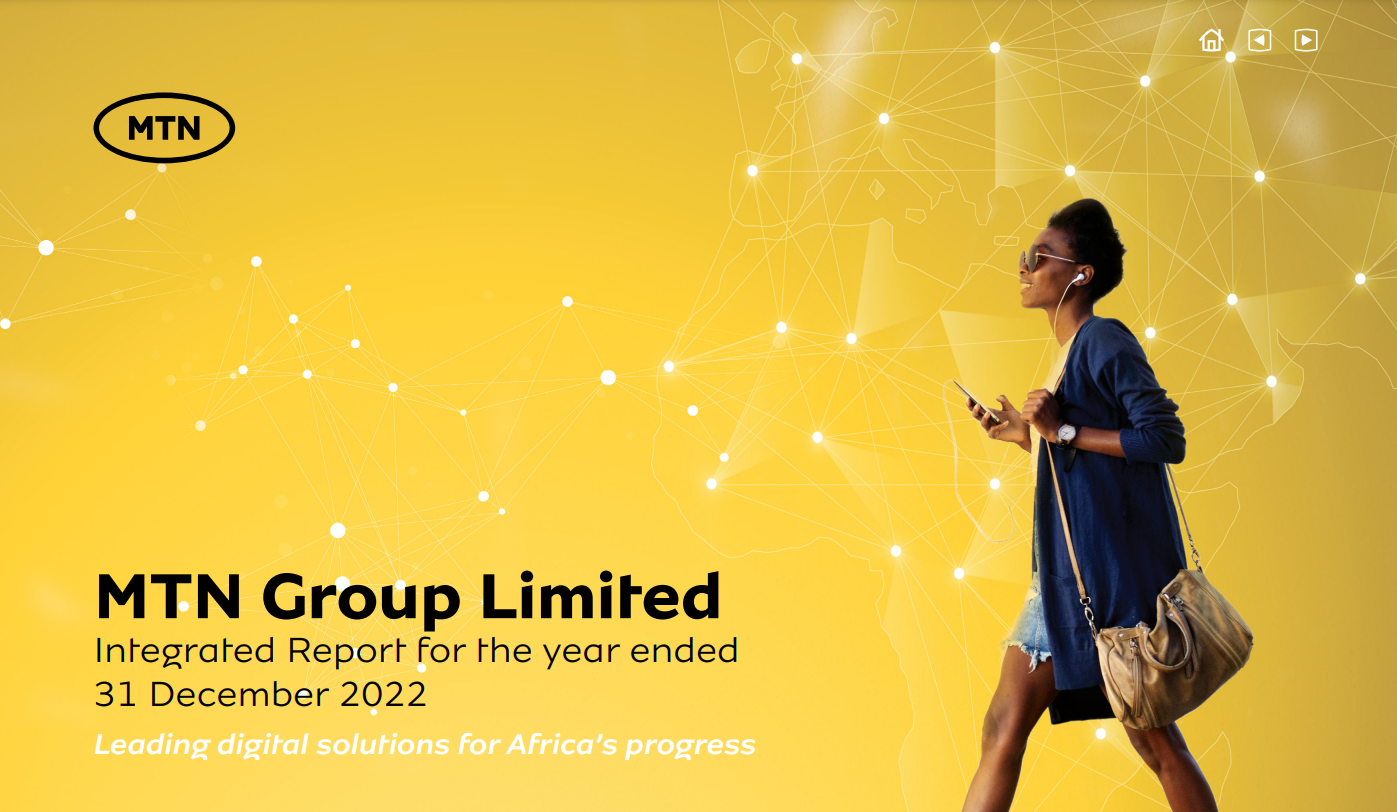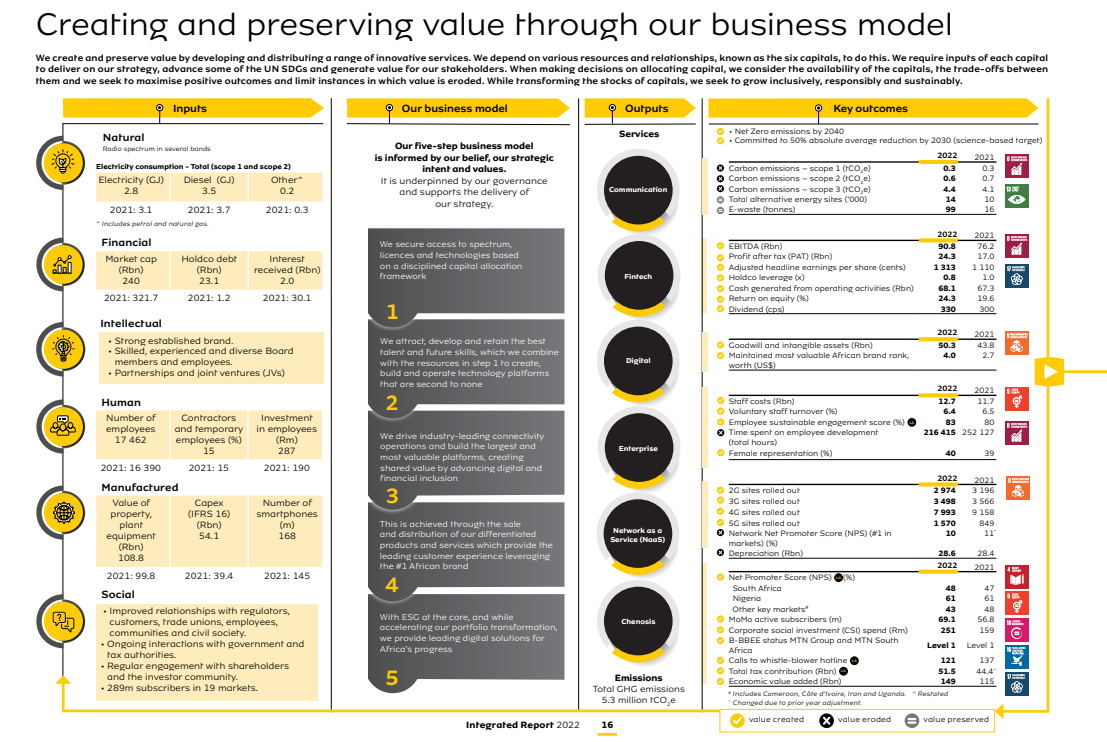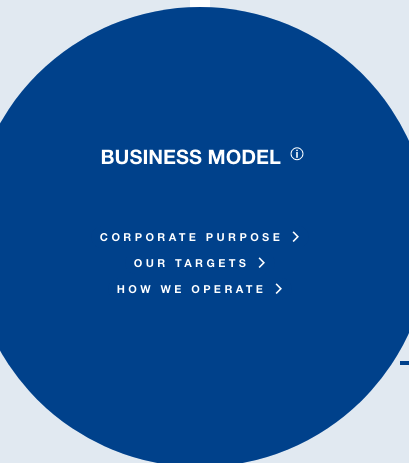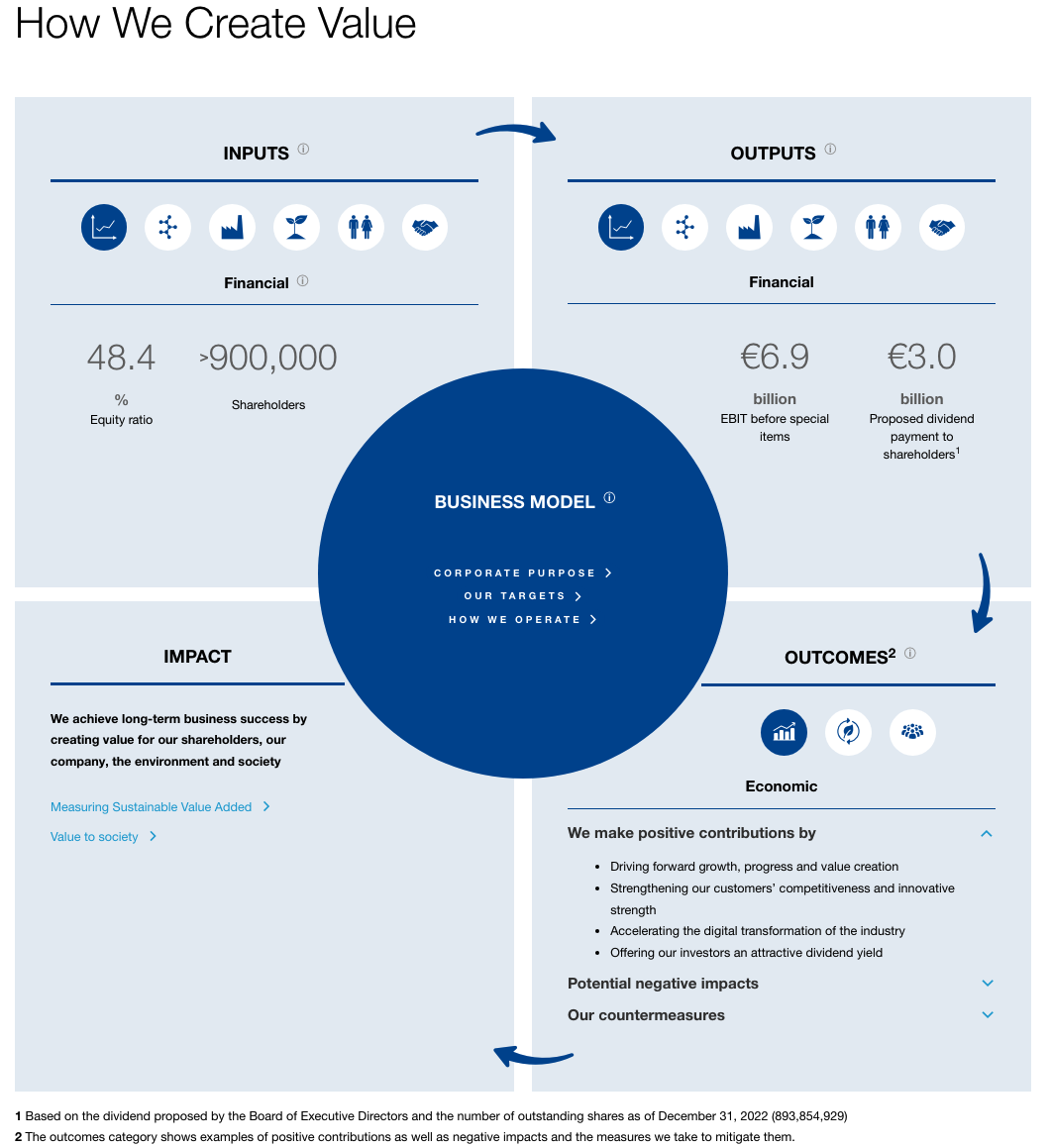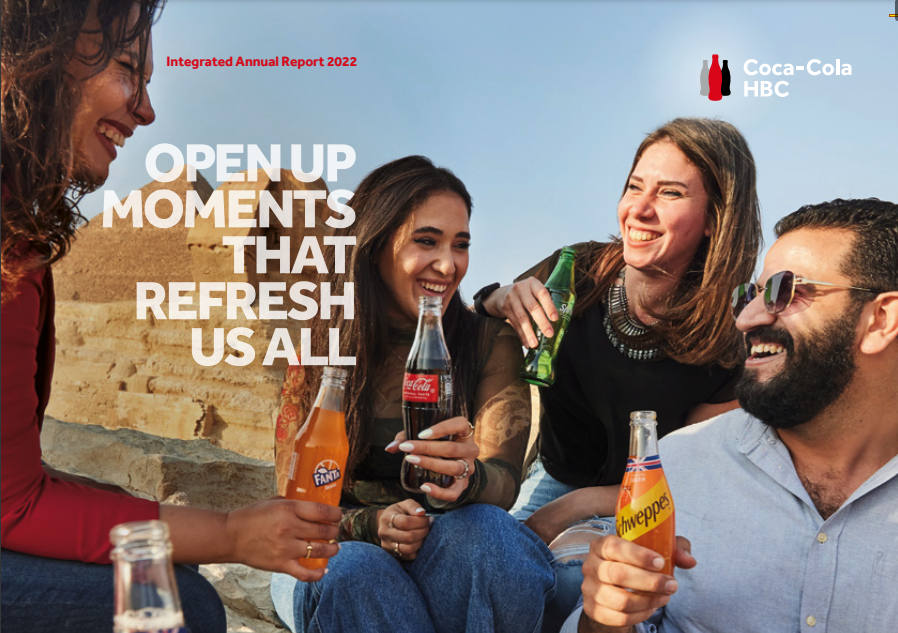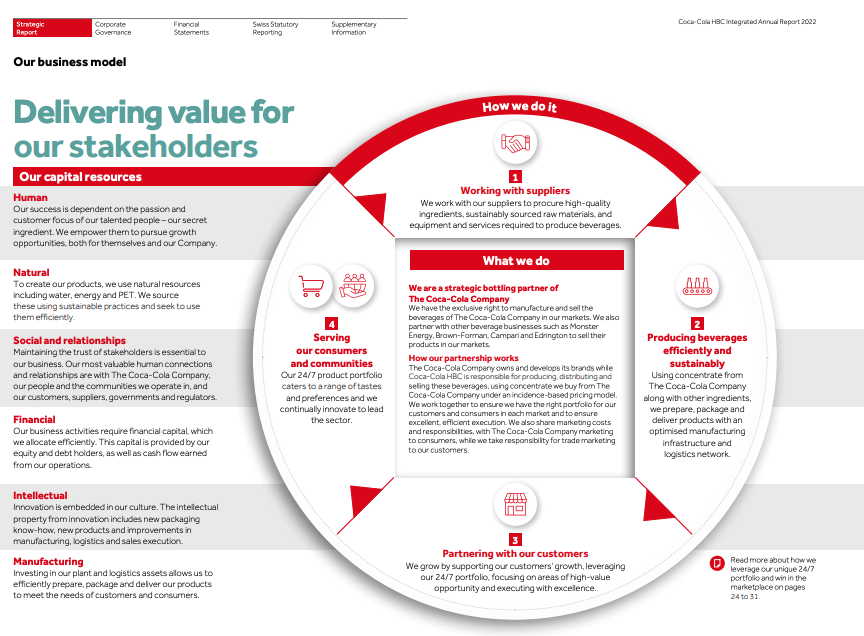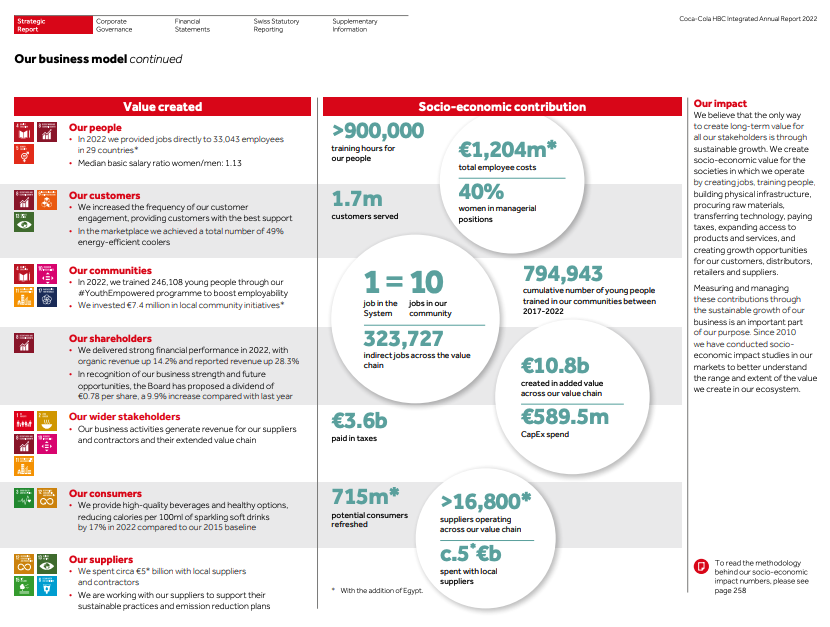Gartner, a research and advisory firm, defines a business model as a description of how an organization creates, delivers and captures value.
A business model describes how a company uses resources (inputs) to produce products, services, and waste (outputs).
The Integrated Reporting Framework, part of the IFRS Foundation International Sustainability Standards Board, is a structure to help organizations show how their business model creates value. The business model transforms inputs from six types of capital (financial, manufactured, intellectual, human, social, and natural) into outputs and outcomes through business activities and interactions that create or destroy value for the company, its stakeholders, society, and the environment in the short, medium, and long terms.
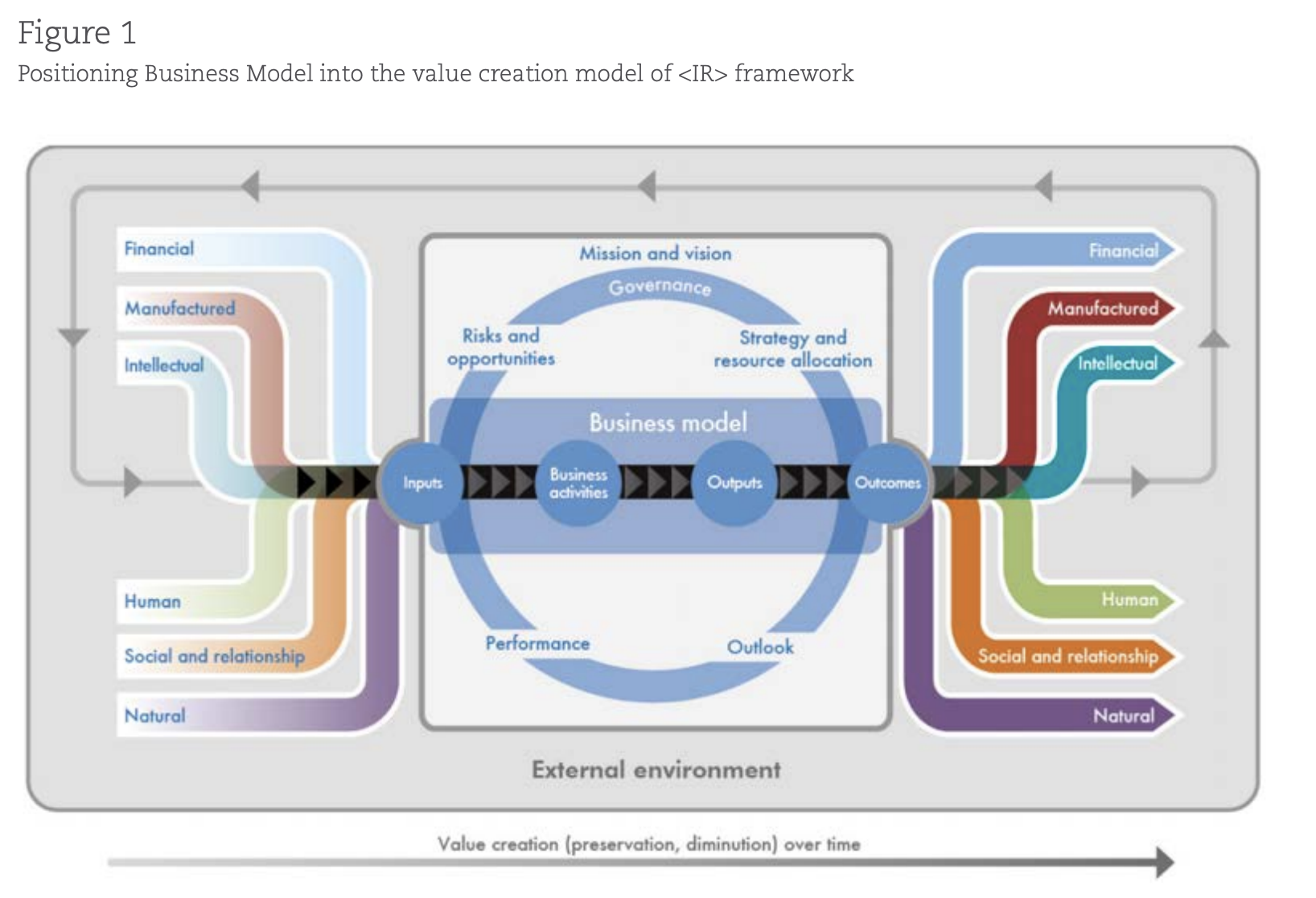
The Integrated Reporting Framework also links the outcomes to the UN Sustainable Development Goals (SDGs).
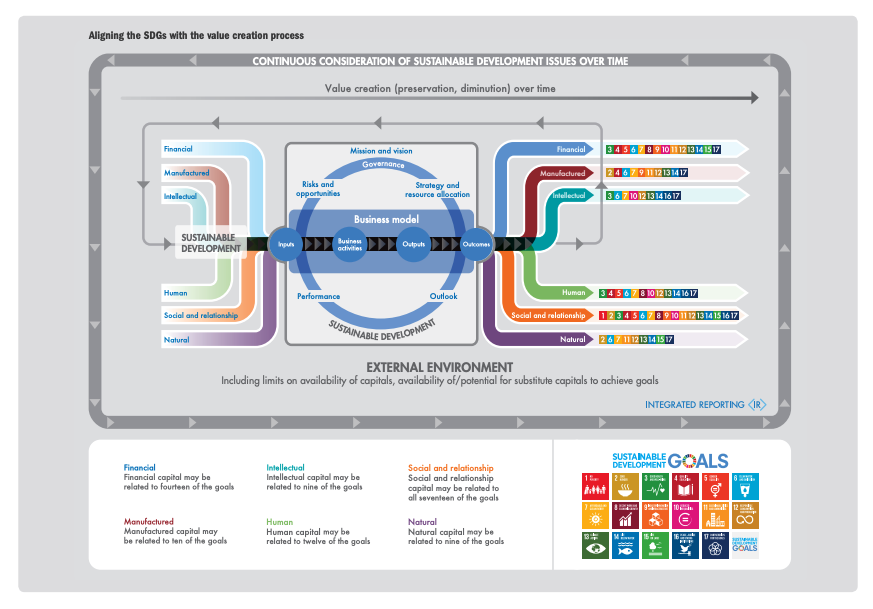
Following the guidance of the Integrated Reporting Framework, business models are often disclosed in a diagram, a type of input/output model showing how a company uses resources to create or preserve value on several dimensions, including economic, social, and environmental.
Why Disclose?
The relationship between a company’s business model, its external environment, and its strategy is dynamic. The company’s business activities and business model change when it introduces new products or enters and exits markets. Companies adopt proactive strategies to transform their business model over time to respond to new risks and opportunities.
Recommended Disclosure
- Resources and Input - Describe the relationships, resources, and inputs that are critical for the business to succeed;
- Business Process - Describe the business processes that are most important to creating value;
- Products and Services - Describe the company’s main products and services, its customers, and where it fits in the industry value chain;
- Structure and Relationships - Describe how the company is structured, its markets, and how it engages with those markets.
International Good Practice
The Integrated Reporting Framework offers practical guidance on how to organize business model disclosures along four stages of long-term value creation: input, business activities, outputs, and outcomes.
